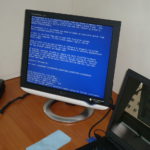Windows 10 might be the best OS that Microsoft has released to date, but even with its improvements, it can still sometimes be a little sluggish. Happily, there are much easier ways to get it back up to speed. There are a great many things that you can do to improve performance, but here we’ll focus on the three things that are the simplest to do while still being effective.
Uninstall the extras
No matter what brand of PC you buy, you have pre-installed programs that the manufacturer includes. Some of these might come in handy, but many are unnecessary and will consume valuable RAM. You can uninstall these by right-clicking on the Start button and choosing “Programs and Features” or by simply clicking Start and then choosing “all apps”. Once under the “all apps” menu, you can scroll through and find those programs you want to get rid of. When you find one, simply right-click and choose “uninstall”. It’s that easy to lighten your PC’s load.
Scale down your startups
In previous versions of Windows, managing your startup processes was a bit tough to do as it involved the msconfig program which wasn’t exactly easy to use. It took a bit of know-how to get into it and make the changes. Starting with Windows 8.1 and continuing in Windows 10, the startup management process has been made much more straightforward. All you have to do is open the Task Manager which can be done either by pressing CTRL+SHIFT+ESC or by right-clicking on the Start button and selecting the Task Manager option in the menu. Once you’re in, switch over to the “Startup” tab. There you’ll be able to see all of the programs that currently load when Windows starts up. There are columns showing you startup impacts for every program. Simply right-click on an entry in order to change its status. This allows you to prevent unnecessary programs from starting when Windows does, which will help you speed things up a bit.
Clean out the clutter
Our third tip is one that may or may not affect you, but it’s important nonetheless. Sometimes, your PC can slow down simply because your hard drive is getting full, which in turn affects your Windows paging file. This can cause lag and sluggish performance, especially if you’re running a machine with 4GB or less of RAM. Windows 10 uses fewer resources than its predecessors, but it can still be a factor. To clean up your hard drive, go to the Start menu and type in “disk cleanup”. This will take you to a handy utility that will show you what junk files are cluttering up your hard drive and allow you to safely remove them.
These are just the basics, but these tips can definitely help you bring your Windows 10 up a notch in terms of performance. And if you need professional IT support to help you with the more technical stuff, get in touch with the friendly and knowledgeable team here at Rapid IT Support today.


